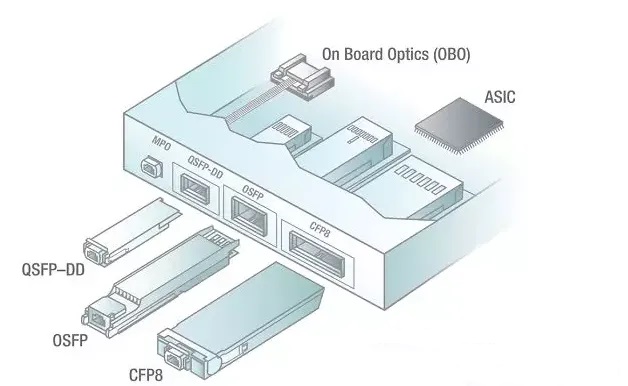Types of 400G Transceivers
2024-03-16
400G optical transceivers are compact, high-performance devices designed to transmit and receive data at a staggering rate of 400 gigabits per second (Gbps). These modules serve as the essential interface between network equipment and optical fibers, converting electrical signals into light pulses and vice versa. By leveraging advanced optical technologies, 400G transceivers enable ultra-fast and reliable data transfer over long distances, catering to the ever-increasing demands of bandwidth-intensive applications.
As an important product in the field of optical communication transmission, optical modules are widely used in high-performance data centers, communication networks, large-scale computing, cloud computing and other fields. In the field of data centers, 400G optical modules can meet the needs for large bandwidth, low latency, and high reliability required for the development of cloud computing and big data. It is also suitable for scenarios such as long-distance transmission and high-speed transmission.
Several different types of 400G transceivers exist, each optimized for specific applications and network configurations. Some of the most common types include:
400G OSFP:
The full name of OSFP is Octal Small Formfactor Pluggable. Octal refers to 8, meaning octal, which means directly using 56G electrical signals, 856GbE, but the 56GbE signal is formed by a 25G DML laser under the modulation of PAM4. This standard is a new interface standard and is incompatible with existing optical and electrical interfaces.
OSFP comes with its own heat sink and has a slightly larger form factor than QSFP-DD but offers additional features such as enhanced thermal management and improved signal integrity. It also uses eight 50 Gbps lanes for data transmission.
400G QSFP-DD:
Q in QSFP-DD refers to "Quad", which means 4 channels. Each QSFP56 is 456Gbe, forming a 200G signal; DD refers to "Double Densiy", which means there are two QSFP56 in parallel, 2200G generates a 400Gbe signal, the full name It is Quad Smal Fom Factor Pluoable-Double Density. This solution is an expansion of QSFP. It adds one line to the original 4-channel interface and turns it into 8 channels. It is smaller in size than OSFP and is compatible with existing 40GbE QSFP and 100GbE QSFP28 interfaces. The original QSFP28 module can still be used, and you only need to insert another module to achieve a smooth upgrade.
This popular form factor offers high density and low power consumption, making it ideal for data center applications. It utilizes eight electrical lanes operating at 50 Gbps each to achieve the aggregate 400G data rate.
400G CFP8:
CFP8 is an expansion of CFP4. The number of channels is increased to 8 channels, and the size is also increased accordingly. Using 16 25G parallel signals can quickly complete the launch and application of 400G products, but the cost is high. You need to use 1625G optical devices, or use PLC splitters to reduce the number of lasers, but the LOSS of the splitters is very high. , which directly leads to a relatively large emission power of the laser, thus increasing the cost. The power consumption is also high, the panel interface density is too low, and the size is large.
This module is designed for longer-reach applications in telecommunication networks. It utilizes 16 electrical lanes operating at 25 Gbps each to achieve the 400G data rate.

400G optical modules also can be categorized based on their transmission mode and reach:
Single-mode vs. Multi-mode:
Single-mode modules transmit data over longer distances using a single light path, while multi-mode modules are suitable for shorter distances and utilize multiple light paths.
Short-reach vs. Long-reach:
Depending on the application, 400G modules can be optimized for different transmission distances, ranging from within data centers to across continents.







